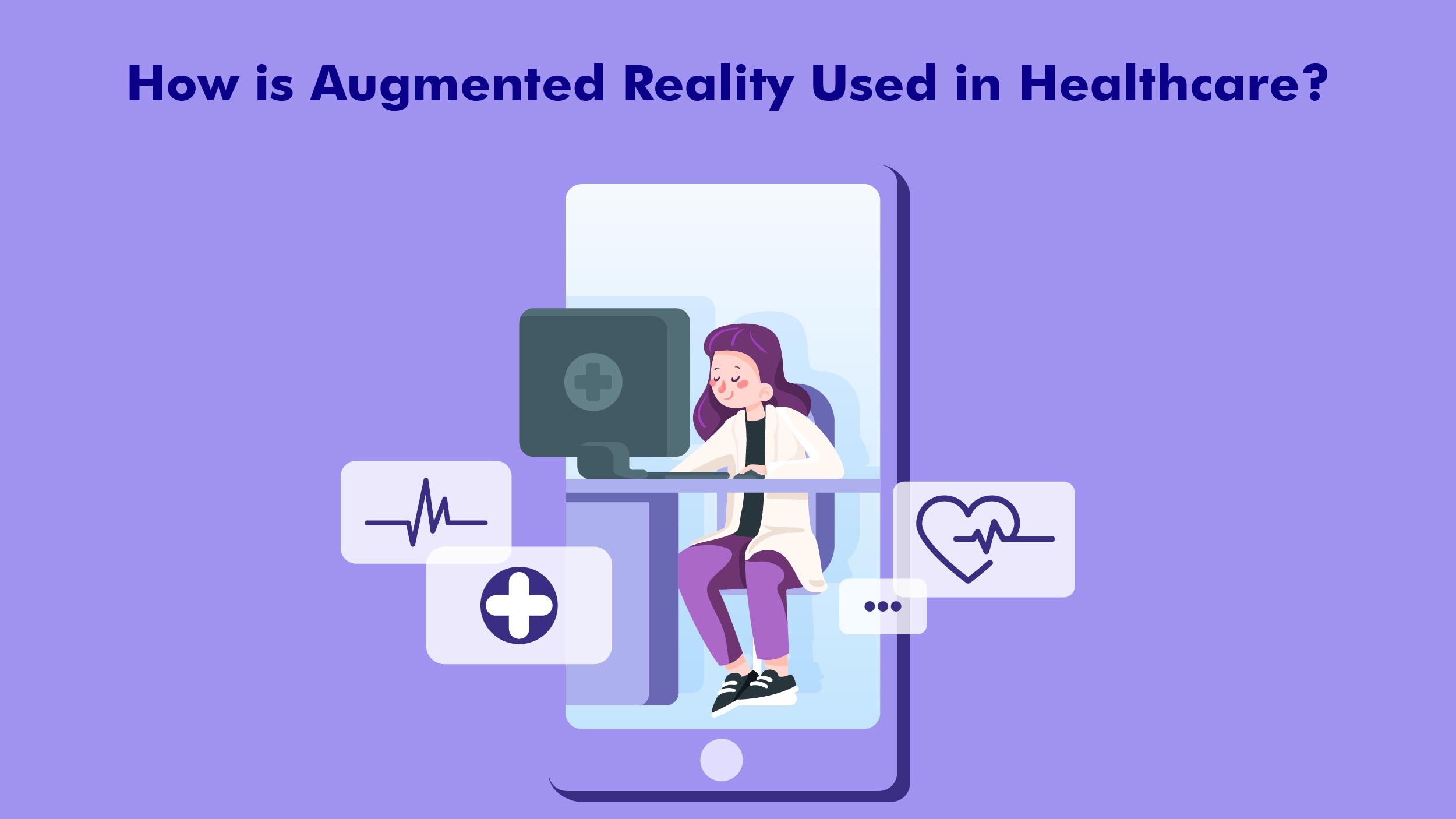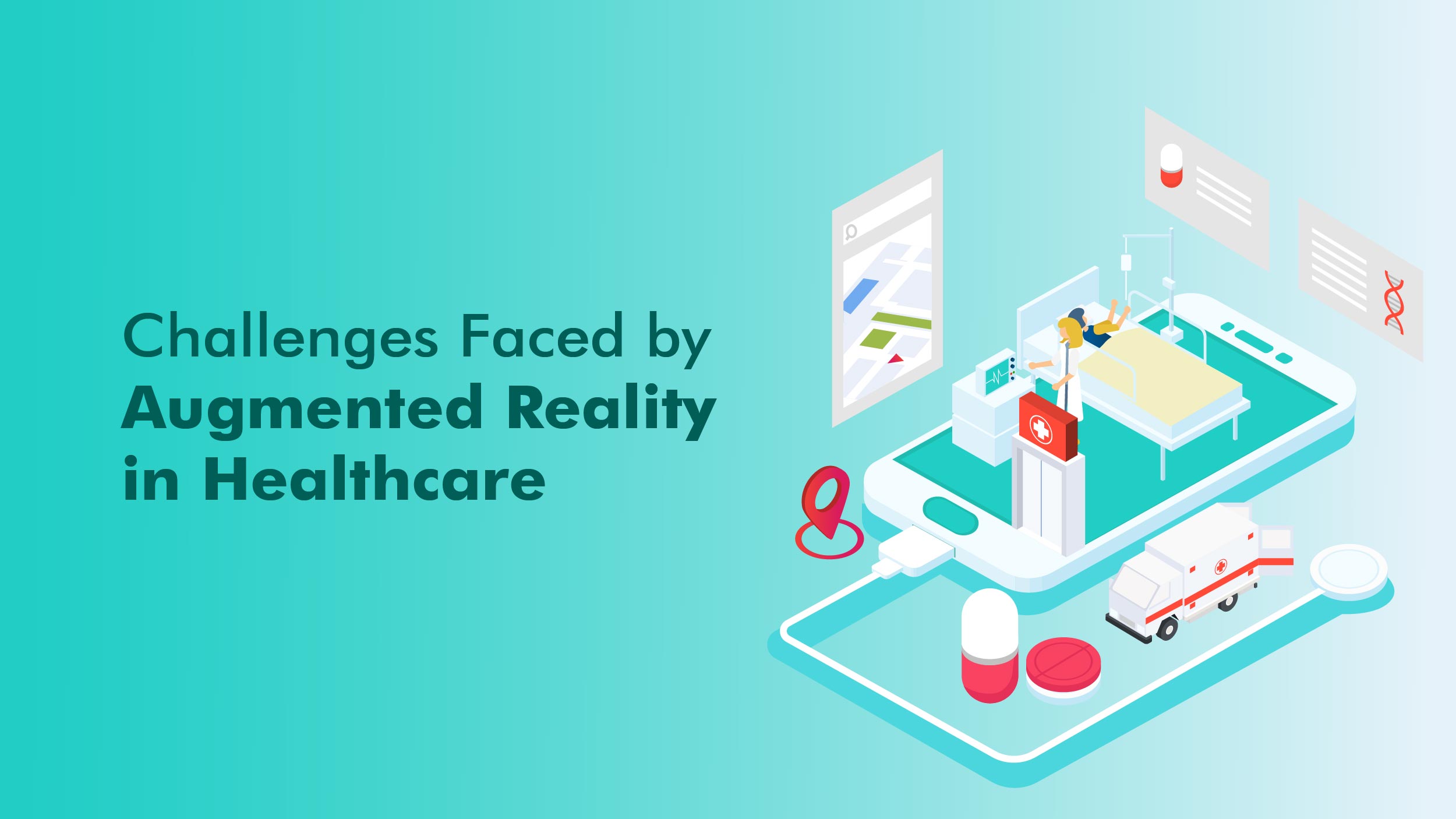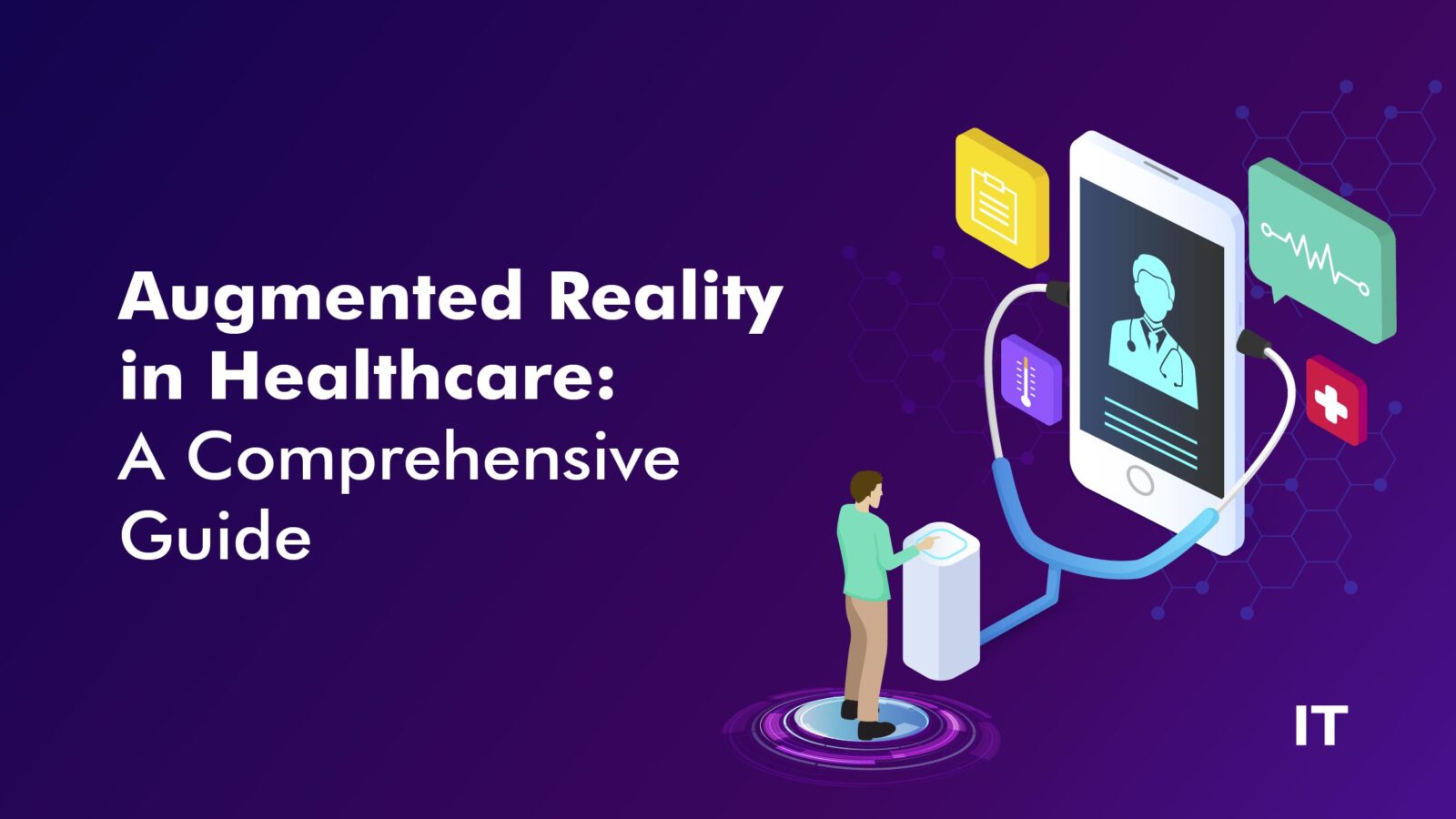Healthcare is an industry that constantly strives to deliver improved patient care and enhanced medical outcomes. However, it faces numerous challenges, such as complex surgical procedures, the need for advanced medical training, and effective patient education. These challenges often require innovative solutions that can bridge the gap between theory and practice, enabling healthcare professionals to make precise decisions and patients to better understand their conditions. With a market valuation of $3.94 billion by 2029, augmented reality in healthcare emerges as a powerful solution. Let’s delve in and learn more about it.
How is Augmented Reality Used in Healthcare?
 Here are some examples of how augmented reality in healthcare works:
Here are some examples of how augmented reality in healthcare works:
- Medical Training and Education: Augmented reality in healthcare is used to enhance medical training by providing immersive and interactive experiences. It allows medical students to visualize complex anatomical structures, practice surgical procedures, and simulate medical scenarios in a realistic and controlled environment.
- Surgical Planning and Assistance: AR technology aids in surgical planning by overlaying digital information, such as 3D models or medical images, and humanoid robots, onto the patient’s anatomy. Surgeons can use AR to visualize the internal structures, plan incisions, and guide them during complex procedures, improving precision and reducing risks.
- Patient Education: Augmented reality can be used to educate patients about their medical conditions, treatment options, and procedures. It allows healthcare providers to visually explain complex medical information in an interactive and easily understandable way, empowering patients to make informed decisions about their healthcare.
- Mental Health and Rehabilitation: AR technology is also being explored for mental health applications. It can be used to create immersive environments for exposure therapy, helping patients confront and overcome their fears or phobias in a controlled setting. Additionally, AR can assist in rehabilitation by providing visual cues and guidance for physical therapy exercises.
- Medical Device Training and Maintenance: Augmented reality in healthcare is utilized for training healthcare professionals on the use and maintenance of medical devices. It can overlay step-by-step instructions, troubleshooting guides, and interactive interfaces onto the devices, improving efficiency and reducing errors.
- Remote Consultations and Telemedicine: AR technology enables remote consultations by allowing healthcare providers to virtually examine patients and provide guidance in real time. It can overlay medical images or vital signs onto the patient’s video feed, facilitating accurate diagnoses and treatment recommendations.
Also Read: Are Humanoid Robots the Perfect Blend of Artificial Intelligence and Human-Like Form?
Benefits of AR in Healthcare
Augmented reality in healthcare offers numerous benefits such as:
Surgical Assistance:
AR facilitates the creation of precise 3D models of patients’ organs or tumors, empowering surgeons with enhanced visualization during procedures. Surgeons utilize hands-free headsets to overlay holographic annotations onto real-time surgical fields, providing guidance and ensuring precision in incisions and surgical maneuvers.
Remote Guidance:
In complex cases, AR enables real-time expert consultations through live video calls, offering remote specialists a comprehensive view of the patient. This facilitates expert guidance during procedures or surgeries, optimizing patient care and outcomes.
Medical Workforce Training:
AR enhances medical training by enabling remote mentorship for medical practitioners and students. Through AR-enabled guidance, students gain hands-on experience, while practitioners receive real-time instructions for procedures and diagnoses, regardless of location.
Diagnosis and 3D Imaging:
AR empowers healthcare staff with advanced 3D imaging capabilities for accurate diagnoses and patient care. By minimizing physical contact through remote visual assistance, AR reduces the need for personal protective equipment (PPE) while ensuring comprehensive symptom visualization and precise diagnoses.
Telehealth and Proctoring:
The surge in telehealth, particularly during the pandemic, is bolstered by AR remote assistance solutions. Patients from remote areas can access expert consultations and diagnoses in real-time, minimizing exposure risks and enabling face-to-face interactions with healthcare professionals.
As AR continues to evolve, its integration into healthcare promises to enhance patient care, streamline procedures, and revolutionize medical training, ultimately advancing the standards of healthcare delivery worldwide.
Challenges Faced by Augmented Reality in Healthcare
 Funding: Many VR/AR startups in the healthcare sector face financial constraints, hindering their ability to invest in product development and research. While the benefits of AR in healthcare are evident, securing funding for innovative solutions remains a significant challenge. Despite this, there’s optimism as hospitals and third-party companies show increasing interest in investing in AR technology.
Funding: Many VR/AR startups in the healthcare sector face financial constraints, hindering their ability to invest in product development and research. While the benefits of AR in healthcare are evident, securing funding for innovative solutions remains a significant challenge. Despite this, there’s optimism as hospitals and third-party companies show increasing interest in investing in AR technology.- Technical Issues: The healthcare industry exhibits hesitancy towards AR solutions due to their novelty and potential technical limitations. Challenges such as device compatibility and resolution constraints need to be addressed to facilitate wider adoption. However, ongoing developments in AR technology indicate potential improvements over time.
- Clinical Organizational Issues: The healthcare industry’s bureaucratic nature presents barriers to the adoption of AR technology. Complex procurement procedures and outdated infrastructure impede the swift integration of AR solutions into clinical workflows. Nevertheless, the compatibility of AR with various devices offers promise for rapid adoption among medical staff.
- Lack of Knowledge: Misconceptions associating augmented reality in healthcare primarily with gaming and entertainment hinder awareness of its applications in healthcare. Educating healthcare professionals about the diverse benefits of AR is essential for fostering acceptance and utilization. Providing firsthand experiences through demos can enhance understanding and encourage adoption.
- Regulatory Issues: Regulatory compliance poses a significant challenge for implementing AR solutions in healthcare. Adhering to stringent rules, regulations, and insurance policies necessitates careful consideration and planning. Overcoming these regulatory hurdles is imperative for the seamless integration of AR technology into healthcare practices.
Top 5 Trends in Augmented Reality in Healthcare
Here are some notable AR trends reshaping the healthcare landscape:
Robotic-Assisted Surgery:
AR in robotic-assisted surgery enhances precision and efficacy by providing real-time overlays of critical information. Surgeons benefit from guided movements and informed decision-making during procedures, leading to improved surgical outcomes and enhanced patient safety.
Advanced Wound Care Management:
AR solutions are transforming wound care management with innovative approaches to assessment and treatment. Three-dimensional visualization of wounds, progress monitoring, and personalized care planning are facilitated through AR applications, expediting healing and ensuring patient comfort.
Physical Therapy and Rehabilitation:
AR technology empowers physical therapy and rehabilitation through interactive exercises and visual feedback. Patients receive guidance for correct movements, progress tracking, and motivational support, resulting in increased engagement and more favorable therapy outcomes.
Accessing Real-Time Patient Records:
Healthcare professionals leverage AR to access real-time patient records and vital information via AR-enabled devices. This facilitates streamlined workflows, and informed decision-making at the point of care, and ensures the availability of accurate and up-to-date data for improved patient management.
Seamless Hospital Navigation:
AR is simplifying hospital navigation for patients, visitors, and medical staff alike. AR wayfinding applications offer intuitive step-by-step directions, floor plans, and points of interest within hospital facilities, alleviating navigation-related stress and enhancing the overall patient experience.
End Note
Augmented reality in healthcare is transforming the medical industry by revolutionizing patient care, medical training, and overall efficiency. From enhancing medical education and surgical planning to improving patient education and mental health therapy, augmented reality is proving to be a valuable tool. It offers immersive and interactive experiences, empowering healthcare professionals to make more accurate diagnoses, perform complex procedures wit

































